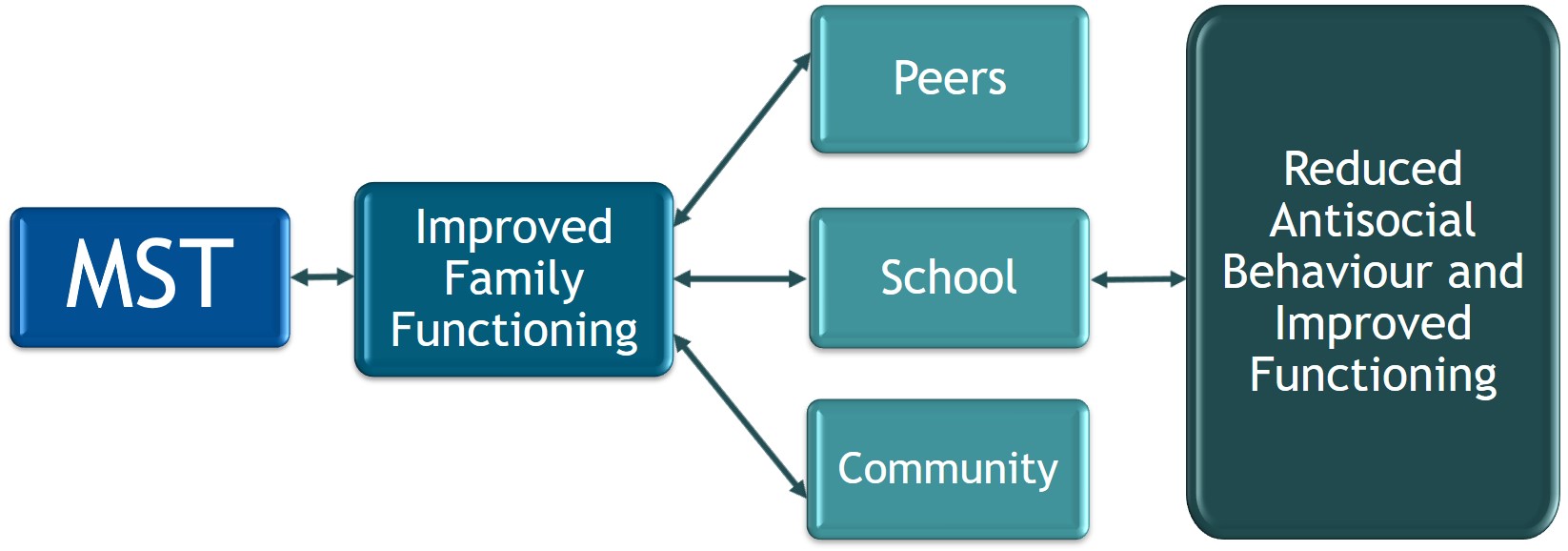- Celebrating Black History Month 2023 Natalie Wilmot, Office Manager and Training Coordinator, reflects on what Black History month means to her and the black...
- 10 years of MST in Leicester We congratulate Leicester City Council on ten years of MST practice! We were thrilled to be able to join them in their celebrations in...
- Croesco to North East Wales The first MST Family Integrated Transitions team (MST-FIT) in Wales! The team will deliver MST FIT across two local authorities, Wrexham...
Theory of Change

Consistent with Bronfenbrenner’s (1979) theory of social ecology, a primary assumption of MST theory of change is that adolescent antisocial behaviour is driven by the interplay of risk factors associated with multiple systems in which youth are embedded (family, school, peer, and neighborhood). To be optimally effective, interventions should have the capacity to address a comprehensive array of risk factors. In MST, we address such a comprehensive set of risk factors on an individualized basis, via the fit assessment and intervention process. The bi-directional arrows between the boxes in different shades of green above represent the interplay of these factors.
The bi-directional arrow between MST and “improved family functioning” represents the collaborative therapeutic process by which the therapist empowers caregivers to gain resources and skills to be more effective; the therapist also helps caregivers build on their increased effectiveness to intervene across the various contexts as needed to reduce youth antisocial behaviour. These efforts of the caregivers are the key avenue through which change occurs.
Specifically, therapists work with caregivers to leverage the strengths of the caregivers, youth, and their ecology to improve discipline and monitoring of the youth, improve family relationships, increase collaboration with the school, improve the caregivers’ linkage to peers, etc- in other words, to address the various factors found to be associated with delinquency that we just reviewed.
A critical element of this work is to increase the youth’s successful integration with a pro-social peer group, and decrease or eliminate time spent with antisocial peers. Research indicates that association with negative peers is a powerful predictor of delinquent behaviour.